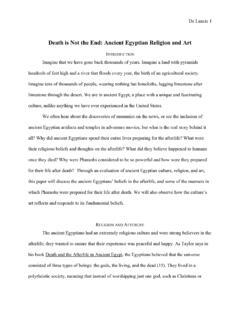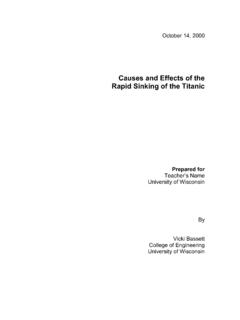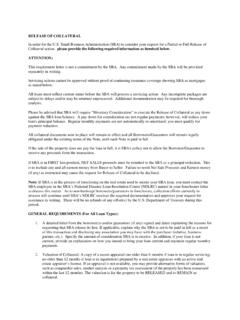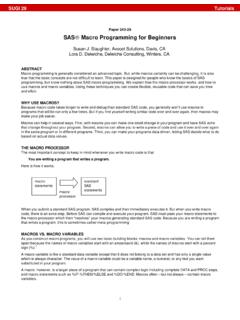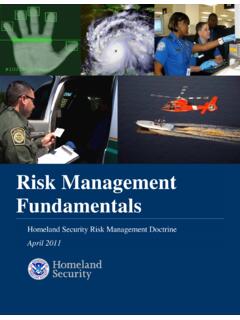Transcription of IRAC: How to Write about Legal Cases - UC Santa Barbara
1 IRAC: How to Write about Legal Cases Leonard Tourney, Gina Genova What differentiates Legal writing good Legal writing from writing on other subjects is not such legalistic phrases as aforesaid, wherein, prima facie, or cease and desist. It is, rather, the systematic application of general rules to specific facts for the purpose of arriving at reasonable, persuasive conclusions. An attorney writing a Legal memorandum to her colleagues, or a motion to a judge, or presenting a closing argument to a jury is applying the law to the particular set of circumstances constituting the case at hand. She or he may have an opinion as to the guilt or innocence of the defendant (if the case at hand is a criminal one). But these opinions must be subordinate to the logical conclusions that follow from the careful application of rules to facts.
2 The selections that follow demonstrate this process of application of rule to fact. We present a hypothetical case a particular set of facts, only some of which are legally relevant. We then offer a systematic analysis, in outline form, of these facts, based on the applicable laws. Next, we present a Legal essay on the case based on our analysis. This example should serve as a useful model for much of your own writing in the subsequent Cases presented in this chapter. Before presenting our case, we should introduce IRAC, a method of presenting arguments on Legal Cases that has been successfully used by generations of law students. IRAC is an acronym that stands for: Issue Rule Analysis (or Application) Conclusion Let s define each of these terms: The Issue is the central question around which the case turns.
3 It is generally couched in the following form: Is a defendant who [indicate specifically what the defendant did] guilty of (in a criminal case) or liable for (in a civil case, or lawsuit) [the specific crime/ Legal wrongdoing (tort) charged? For example, Is the defendant, who was recorded by a police officer as traveling 80 mph in a 55 mph zone, guilty of speeding? This section is generally one sentence long. The Rule is the primary law (or set of laws) that apply in this case. It is quoted verbatim (and placed within quotation marks) because the letter of the law is crucial. This rule may be a statutory law (such as a section of the criminal code, like arson) or it may be an accepted Legal principle based on precedent.]
4 This section is frequently one sentence long. Note: secondary rules those that define or clarify certain elements or terms of the primary rule (such as privileged or intent ) may also apply to the case. These secondary rules are introduced in the appropriate places in the next section, the Analysis. The Analysis, the longest section of the essay, is a systematic application of components or elements of the primary and secondary rules to those facts of the case that are legally relevant. For example, robbery is defined in the California Penal Code (section 211) as the felonious taking of personal property in the possession of another, from his person or immediate presence, and against his will, and accomplished by means of force or fear.
5 The separately underlined phrases are individual elements of robbery, and each element must be satisfied for the defendant to be found guilty of robbery. In the case of phrases joined by or (as in force or fear ), only one of the two elements need be satisfied. In the analysis, it is frequently necessary to bring in additional Legal principles that provide definitions or clarifications of key terms in the primary rule. These secondary rules should also be quoted verbatim. For example, the self-defense privilege is a secondary rule that clarifies the conditions under which an attack against another may be legally justified, or privileged. By facts of the case that are legally relevant (in the paragraph above) we mean those facts that can be associated with one or more elements of the rule.
6 For example, the fact that the defendant used a gun to inspire fear would be legally relevant. The fact that the defendant was in a bad mood because he had just been fired from his job is legally irrelevant. In general, it is a good idea to use climactic order in developing your analysis. That is, first dispose of those elements about which there is likely to be little dispute or about which there is little question as to whether they have been satisfied. Then, move on to the elements that require more extended discussion. It is a good idea to conclude each section of the analysis by indicating in some manner that a particular element of the rule has or has not been satisfied. However, defer the overall conclusion (the guilt or innocence or liability or non-liability of the defendant) for the very end of the essay.
7 Do not conclude guilt or liability prematurely, before you have analyzed all the applicable facts! Also, do not merely summarize facts in this section, as if they speak for themselves. Analyze them by applying rule to fact. The Conclusion is the answer to the question that is posed in the Issue statement. It is generally no more than a few sentences (and sometimes just one sentence) long. To see how this process works, read the following selections. First we present a hypothetical case, Incident at the Airport, written by Leonard Tourney, who teaches Legal writing at the University of California at Santa Barbara . Next we present an analysis of this case in outline format, with a systematic application of each element of the rule (in this case, the rule for battery) to the relevant facts of the case.
8 The analysis was written by Gina Genova, who also teaches Legal writing at , Santa Barbara , and who practices law in that city. Next, we present a model Legal essay based on Genova s analysis, written by Leonard Tourney. Tourney s essay is followed by his Short Guide to Writing Effective Issue Statements. Finally, we present three problematic model essays (written by Tourney) based on the Incident at the Airport scenario. You are invited to discover and discuss the problems. Incident at the Airport Leonard Tourney Lisa St. John arrived at Los Angeles International Airport late in the afternoon after a grueling flight from London via New York and Chicago. She was exhausted and irritable, ready to chuck her job as a computer consultant for international corporations.
9 Her mood did not improve when she found that Frank Mason, her fianc , was not waiting to pick her us as he had promised. She had long suspected Frank of being a closet flake just waiting to reveal himself to her after he and Lisa were married and only an expensive divorce would undo the damage. The upside of his failure to show was that it gave Lisa cause to break things off. While she waited, she steamed and rehearsed just how she would ell him to marry someone else. The plane had arrived at 4. Frank didn t appear until nearly 7. Lisa had avoided eating so that her blood sugar level would drop. She wanted to feel awful, look awful. Frank deserved what he got: a whining, inconsolable wreck. Then she saw him, and her cup of wrath overflowed.
10 Frank was smiling, carrying a dozen roses and a box that looked very much like Lisa s favorite chocolates. He threw his arms open wide to greet her and in so doing hit Eben Sommers, a 90 year old man waiting to get a plane to Detroit. The blow broke Mr. Sommers glasses and his nose. You moron, why don t you watch what you re doing? Lisa cried, as Frank struggled with the roses, candy, and Mr. Sommers, whom he was trying to help up off the floor. The old man had reminded her of her grandfather who had died a month earlier. Enraged, Lisa kicked at Frank but missed, hitting Mr. Sommers in the leg, breaking his tibia. Mr. Sommers cried out in agony. His cries brought Albert Fenstermocker, a German tourist, to his aid.


